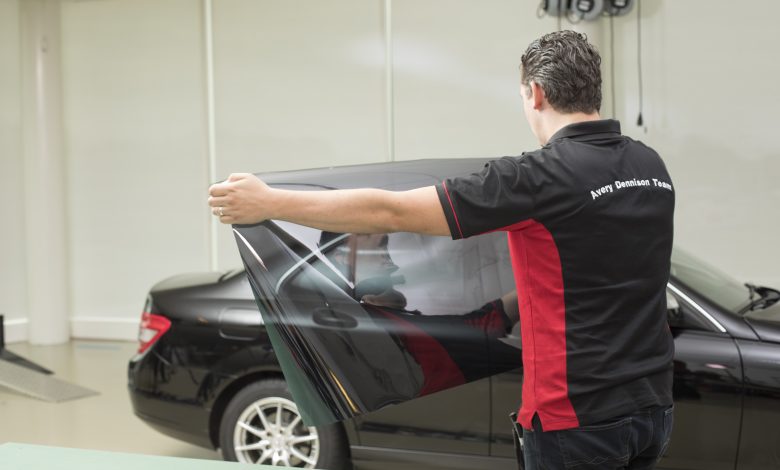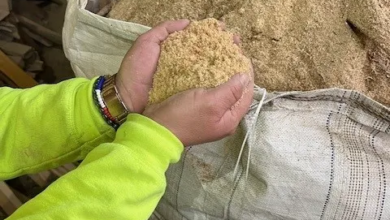Hints on Window Tint
Adding window tint to your wrap shop offerings
The transition from wrap to tint may seem simple, but wrap shops wanting to get into the business of tinting windows will want to research the industry and make a few adjustments in how they install the product.
A wrap is meant to be seen and provide accents, advertising, or color changes to a vehicle, while the objective of a window tint is to provide heat rejection for occupant comfort and protection from ultraviolet, or UV, rays.
“Vehicle wraps, paint protection film and window tint all go hand-in-hand. A shop with the ability to sell and install all three products opens up the door to increased potential sales and customer loyalty and enables a consumer to visit a one-stop-shop for all of their vehicular needs, whether it is customization or protection,” says Ryan Nufable, operations manager of service group distribution for DUB IR Window Films.
Wrap shops entering the window tinting market need to start with education before they expand their services, says Jane Chao, global manufacturing manager for the 3M.
“The first thing we recommend you do is approach the manufacturer who you want to work with and talk to their representative to learn about the window film offerings and training available for installers. It’s very crucial you get proper training,” Chao says. “It’s important you understand the products and who you want to partner with.”
What customers want
Part of the education involves knowing what the customer wants in a window tint and that customers typically fall into three categories, Chao says. They purchase a tint for aesthetic reasons to give a dark look to the vehicle’s windows; they want UV protection and performance, specifically for heat rejection and comfort; or they want performance but in a clear glass look that allows them to be seen and maintains the authenticity of the original car, such as in classic vehicles, she says.
Two additional reasons to purchase a tint is for privacy and safety, because the material will help prevent shattering by holding the glass together in the case of a car accident, says Eric Holmes, North American sales manager for automotive at Eastman Chemical Company, a division of Eastman Chemical Co. in St. Louis.
“Buying window film is about the customer experience,” Holmes says. “It’s going to block heat, keep glass intact and protect from UV rays.”
Wraps shops also need to understand the federal and state tint law requirements, Chao says. Each state differs in the maximum visible light transmission, or the amount of light that is allowed to transmit from outside the vehicle to the inside space, she says. The VLT tint law dictates that the net tint is measured after the tint has been installed on windows, which may already have a tint, she says.
The darkest tint is at 5 VLT, or a limousine tint similar to application on limousine vehicles, providing nearly 100% privacy, Chao says.
A tint blocks out three aspects of sunlight, including visible light, infrared light, IR, and UV light. The higher the number of Total Solar Energy Rejection, or TSER, the better the overall protection and the less amount of heat that can come through the glass.
Different types of window tint
Wrap shops will need to research the different types of window film, Nufable says, adding that most customers will not know the difference between a regular window tint and a UV and IR-rejecting film.
“Your basic dyed polyester film is inexpensive and does a great job for aesthetics but does little to protect the occupants of the vehicle from heat, and more importantly, the damaging rays of the sun,” Nufable says. “Metallic films offer some heat rejection but are reflective, sometimes difficult to install and may interfere with the vehicle’s electronics systems.”
The installation of tint
Wrapping a car and tinting windows have some similarities-they use of some of the same tools and require prepping of the vehicle with a clean environment and surface application.
“Outside of that, tint is installed as a wet application where the majority of wrap films are applied dry,” Nufable says. “Certain vinyl wrapping films and paint protection films are more forgiving than window tints in that they can be easily manipulated and moved into position prior to final installation.”
For the installation of a window film, there is a difference in how wrap and tint products are handled, and working with a tint requires an understanding of product properties, Chao says. One main difference is that a wrap typically stretches and shrinks, while window film mainly shrinks, she says.
“The same techniques for wraps will not work for window film,” Chao says.
Film is either hand cut to the pattern or is product cut by using software to input the pattern and a plotter to cut it, and any excess film is removed, Holmes says.
The first step in installing the film is to make sure the installation surface is clean, as well as the entire vehicle to avoid any dirt and debris, Holmes says. The film consists of a pressure sensitive adhesive covered by a silicone liner, which is pulled off the adhesive and lined up to the edges of the interior side of the glass, he says. The film is applied to the glass by spraying the adhesive with a mounting or slip solution as the liner is slowly released from the film, he says.
“Once you get it lined up and everything fits right, use a squeegee to remove the slip solution and water out of the pattern,” Holmes says. “You need to use slip solution to properly mount the film to the glass and use a squeegee to get rid of the slip solution between the film and the glass.”
For the first few days after installation, moisture can build up or form moisture pockets, because the film is porous and can have small amounts of leftover moisture, Holmes says. The curing process can take two to three days in sunny weather up to two weeks, he says.
For the back and door windows that have some curvature, the film needs to be heat formed to shrink down to fit that curvature, unlike a wrap that can be stretched and pulled, Holmes says. Heat forming can be done in different methods, such as through dry shrinking, using a dryer sheet sprayed with water to coat the window, Holmes says. Once the coating has dried, the glass is prepped with an H pattern and the film is installed, smoothed by a hard Teflon card to tack the film to the glass, he says, adding that another tool needed for the process is a utility knife.
Finding a tint partner
Wrap shops, once they understand the installation process for film and make modifications to their shop space, also need to partner with the right manufacturers and suppliers to help them develop and grow their businesses, Holmes says. Most film manufacturers and suppliers carry a vast array of window film, sizes and shade options for VLT, and wraps shops need to become well educated on the product offerings to be able to sell them to customers, he says. Shops need to know how to pitch the products and explain their purposes and how to help customers choose what works best for them, he says.
“Buying window film is about the customer experience. They need to be made aware of the benefits of window film,” Holmes says.
The cost of the film varies and is the least expensive part of the installation, Holmes says.
“With the film itself, it is not very expensive, less than 20% of the job in most cases,” Holmes says. “What the customer is paying for is the labor to put the product on.”







